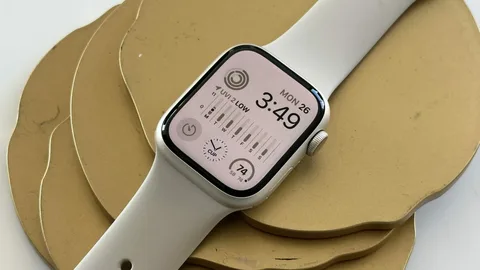Once confined to the realm of science fiction, smartwatches have rapidly evolved to become indispensable gadgets that adorn the wrists of millions worldwide. This article delves into the fascinating journey of smartwatches, tracing their evolution from basic timekeeping devices to sophisticated wearable companions that seamlessly integrate with our daily lives.
**1. Genesis of Wearable Technology
1.1 Pioneering the Concept of Smartwatches
The genesis of smartwatches can be traced back to the early 1980s. Seiko introduced the “RC-1000 Wrist Computer,” a groundbreaking device that combined timekeeping with basic computing functions. While the technology was nascent, this marked the beginning of the integration of computing power into a wrist-worn device.
**2. The Advent of Personal Digital Assistants (PDAs)
2.1 From Simple Tasks to PDA Functions
In the late 1990s and early 2000s, the concept evolved with the introduction of PDAs. Brands like Microsoft and Palm explored the integration of personal digital assistants into watches, allowing users to manage contacts, calendars, and even play simple games on a miniature screen.
**3. Fitness Trackers and Early Smartwatches
3.1 Focusing on Health and Fitness
The mid-2000s witnessed the emergence of fitness trackers that laid the groundwork for modern smartwatches. These early devices focused on health monitoring, step counting, and basic notification alerts. They foreshadowed the trajectory of smartwatches as health and fitness companions.
**4. The Game-Changing Entry of Pebble
4.1 E-Ink Displays and App Integration
Pebble, launched in 2013, played a pivotal role in shaping the smartwatch landscape. It introduced an E-Ink display for improved battery life and seamless app integration. Pebble’s success demonstrated the market’s appetite for smartwatches and paved the way for major players to enter the scene.
**5. The Rise of Industry Giants: Apple, Samsung, and Google
5.1 Apple Watch and the Integration of Ecosystems
Apple’s entry into the smartwatch arena in 2015 with the Apple Watch marked a turning point. The device seamlessly integrated with the Apple ecosystem, offering health tracking, customizable watch faces, and a diverse range of apps. Samsung and Google followed suit, introducing their own ecosystems and expanding the capabilities of smartwatches.
**6. Advancements in Health and Wellness Tracking
6.1 Heart Rate Monitoring, ECG, and Sleep Tracking
Modern smartwatches have become comprehensive health and wellness companions. Advanced sensors enable features such as continuous heart rate monitoring, electrocardiogram (ECG) capabilities, and detailed sleep tracking. These functionalities contribute to a holistic approach to personal health.
**7. Fashion and Customization
7.1 Blending Style with Technology
Smartwatches evolved beyond mere gadgets to fashion statements. Manufacturers recognized the importance of design and customization, offering a plethora of bands, watch faces, and materials. This fusion of style and technology has broadened the appeal of smartwatches across diverse consumer segments.
**8. The Integration of Advanced Technologies
8.1 LTE Connectivity, GPS, and Voice Assistants
As smartwatches matured, they integrated advanced technologies for enhanced functionality. Features like LTE connectivity for independent communication, GPS for accurate location tracking, and voice assistants for hands-free control became standard, further solidifying their position as versatile companions.
Conclusion
The evolution of smartwatches is a testament to the relentless pursuit of innovation in technology. From humble beginnings as wrist computers to sophisticated devices seamlessly integrated into our daily lives, smartwatches continue to redefine convenience, health monitoring, and personal style. As technology advances, the evolution of smartwatches is far from over, promising even more exciting possibilities in the near future.
FAQs
- What was the first smartwatch, and when was it introduced?
- The concept of smartwatches began with Seiko’s “RC-1000 Wrist Computer” in the early 1980s. It combined timekeeping with basic computing functions, marking the initial foray into wearable technology.
- How did Pebble contribute to the evolution of smartwatches?
- Pebble, launched in 2013, played a crucial role by introducing an E-Ink display for improved battery life and seamless app integration. Its success demonstrated the market’s interest in smartwatches and influenced major players to enter the industry.
- How did Apple, Samsung, and Google impact the smartwatch landscape?
- Apple’s entry with the Apple Watch in 2015 marked a turning point, integrating with the Apple ecosystem. Samsung and Google followed suit, introducing their ecosystems and expanding the capabilities of smartwatches, transforming them into versatile companions.
- What advanced health and wellness features do modern smartwatches offer?
- Modern smartwatches offer advanced health and wellness features, including continuous heart rate monitoring, electrocardiogram (ECG) capabilities, and detailed sleep tracking. These functionalities contribute to a holistic approach to personal health.
- How have smartwatches evolved in terms of design and customization?
- Smartwatches have evolved beyond gadgets to fashion statements. Manufacturers recognize the importance of design and customization, offering a variety of bands, watch faces, and materials, blending style with technology.
